Local News
Winnipeg-based researchers receive prestigious awards
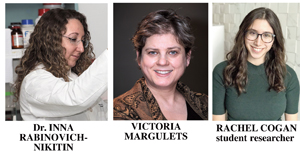 By MYRON LOVE Three members of Dr. Lorrie Kirshenbaum’s Institute of Cardiovascular Sciences (ICS) research team – based at the St. Boniface Hospital campus’ Albrechchtsen Research Centre – were recently recognized for their efforts with prestigious awards.
By MYRON LOVE Three members of Dr. Lorrie Kirshenbaum’s Institute of Cardiovascular Sciences (ICS) research team – based at the St. Boniface Hospital campus’ Albrechchtsen Research Centre – were recently recognized for their efforts with prestigious awards.
The Winnipeg Foundation’s Martha Donavan Leadership Development Award for Women’s Health Research, which, this year, was given to Dr. Inna Rabinovich-Nikitin, is intended to provide leadership development opportunities for women in the Rady Faculty of Health Sciences at the University of Manitoba. Eligible applicants include women who are full-time or part-time academic faculty members or students of the Rady Faculty of Health Sciences or students, as well as post-doctoral trainees (including residents), presently enrolled in a program of study within the Rady Faculty of Health Sciences.
Rabinovich-Nikitin also holds the prestigious Canadian Institutes of Health Research (CIHR) Post-Doctoral fellowship award, which is given to top leading Canadian post-doctoral fellows.
“Inna is a terrific young scientist and among the brightest who have worked in my lab over the years,” says Lorrie Kirshenbaum of the Israeli-trained scientist.
And she, in turn, praises Kirshenbaum as a great mentor. “I have learned a lot from working with Lorrie,” she says. “He has been a real inspiration for me.”
Rabinovich-Nikitin came here five years ago with her husband, Sergey, and their two children (a third child was born here) to further her scientific knowledge though working in Kirshenbaum’s lab. The world-renowned Kirshenbaum’s lab studies heart disease and heart function with the goal of researching means to repair damaged heart cells and prevent heart failure – a major problem worldwide.
Rabinovich-Nikitin was born in Kishinev in Moldova but raised on a kibbutz and, later, Ashdod. She is a graduate of Tel Aviv University with a Ph.D in biotechnology.
“I was always interested in science – how things work,” she notes. “I have a particular interest in women’s cardiac health.”
She says that she hopes eventually to be able to open her own lab in Canada.
Also having recently received recognition for their research have been Rabinovich-Nikitin’s colleague at the Kirshenbaum lab, Victoria Margulets, and Rabinovich-Nikitin’s student researcher, Rachel Cogan. Both were recognized for their work at the 22nd Annual Naranjan Dhalla Cardiovascular Awards, which were held virtually on December 17th. Rachel Cogan, a third year science student at the University of Winnipeg, was the recipient of the T. Edward Cuddy Student Research Award. Margulets was recognized with the Kalwant Dhalla Research Technician Award.
The annual event is a joint effort of the Institute of Cardiovascular Sciences at St. Boniface Hospital Research and the University of Manitoba as a way to celebrate excellence in cardiovascular research. The Cuddy award is one of several awards which recognize outstanding recipients for their contributions and success in research, medicine and support services.
“I feel proud and honoured to have been chosen for the Kalwant Dhalla Award,” says Margulets, who has been involved in research at the Kirshenbaum Cardiac Gene Biology Lab since she came from Israel in 2009.
This award recognizes the high quality of dedicated service over time by a technician in any program within St-Boniface Hospital Research. The individual must have been in this technical role for not less than five years.
“Upon joining my laboratory, I was immediately impressed by Vicky’s work ethic,” wrote Lorrie Kirshenbaum in support of Margulets’ nomination. “She is a dedicated, hardworking and committed and has proven that I can always rely on her to complete any given task. Her commitment to my laboratory and constant willingness to help others in the research centre is truly exemplary of who Vicky truly is. I have never met an individual with such high level of loyalty and personal interest for helping others as Vicky Margulets.”
In the laboratory, Kirshenbaum continued, “Vicky is responsible for managing our cell culture facility. Vicky is a superb experimentalist. She is responsible for designing and conducting her own experiments in the laboratory with great care, precision and meticulous attention to detail. She also runs our live-cell imaging facility and is responsible for developing new techniques within the laboratory.”
Margulets is originally from Kiev. She moved to Israel in the early1990s, earning a Master of Science degree (1999) from the Technion Institute’s Faculty of Medicine in Haifa. Prior to coming to Winnipeg, she assisted in stem cell research at the Technion. There she was responsible for managing and maintaining all the cell culture and stem cell activities for the entire research facility.
While at the Technion, she was part of a joint research team which partnered the Technion with Johns Hopkins University in Baltimore under the auspices of the National Institutes of Health. She worked as one of the leader instructors of “Human embryonic stem cells: culture techniques” course.
“I had spoken with Lorrie Kirshenbaum about joining his lab before coming to Canada,” she notes. “We arrived in Winnipeg (with her husband, Shlomo, and their three children) at the end of June (in 2009) and started work at the lab on July 1.”
Kirshenbaum adds that in a very short time, she became an indispensable member of the staff and has taught many summer and graduate students, postdoctoral fellows, and trainees in the lab.
He adds that over the past five years, Margulets’ technical experimental work and results have been written up in many top medical journals.
Margulets adds that she and her family are glad to be part of the growing Jewish community in Winnipeg. “Jewish identity and traditions are very important to my family,” she says. “Two of my children have already graduated from Gray Academy of Jewish Education and are currently enrolled in the Faculties of Architecture and Engineering at the University of Manitoba. The youngest is still at Gray Academy. ”
Rachel Cogan, the recipient of the Cuddy Award, is in her third year of study in Neuroscience at the University of Winnipeg. “It was a real honour to receive the Cuddy Award,” says the daughter of Jessica and Joel Cogan.
The Cuddy Award is based primarily on excellence in research and the track record of the candidate. Cogan notes that she has earned several scholarships and has maintained a consistently high GPA.
A graduate of Oak Park High School (she was a student at Gray Academy to the end of Grade 9), Cogan applied last year – after second year – to the ICS to do her field work as part of her studies.
“I have known of Dr. Kirshenbaum and his work for quite some time,” she says. “I was really excited to be accepted into the program. I am really grateful for the support that I have received from the amazing people I am working with at the lab and the hospital,” she says.
Her career goal, she notes, is to be working in clinical medicine and/or research.
Local News
New Israeli restaurant opens in River Heights

By BERNIE BELLAN (July 6, 2025) It’s been a long time since our community has been able to welcome the opening of a restaurant that specializes in Israeli food.
That void is now going to be filled with the opening of The Green Falafel, at 1833 Grant (corner of Centennial – next to the Subway).
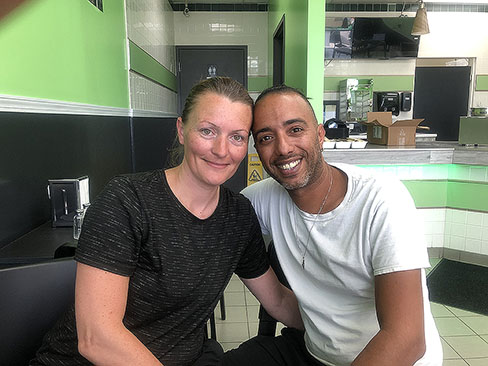
The restaurant is the fulfillment of a dream long held by the husband and wife team of Ariel and Eden Maudi, who have been living in Winnipeg the past 11 years.
Ariel, who was born in Israel and grew up in Beer Sheva, says that he worked in telecommunications in Ramat Gan for several years. He adds though that he had always dreamed of owning his own falafel stand in Israel, but life was difficult there and he decided to come to Canada as a tourist to see whether there were any opportunities here for him, Eden and their two young children.
Eden, who was born in Russia and moved to Israel with her family in 1996, stayed behind with the two kids, who were both pre-schoolers, while Ariel tested the waters in Canada first.
Ariel says he came to Canada as a tourist in 2013. His first stop was in Toronto, where he acquired his 1st class driver’s license. At the end of 2013 he moved to Winnipeg where he began working as a truck driver. Soon he found himself employed as a successful sales person at Vickar Nissan where, he says, he once achieved the status as the top car sales person in Canada. After working at Vickar Nissan for a number of years, Ariel began working as an installer for Bell MTS.
Meanwhile, Eden began working at a Walmart, later at the Costco on Regent.
But, when the opportunity to move into a space that had been previously occupied by another restaurant, but which had closed, became available, Ariel and Eden decided to open their own Israeli restaurant in an area that hadn’t seen Israeli food served since the controversial closure of Bermax Café in 2019.
The Maudis say that they will be serving a variety of Israeli dishes – all vegetarian, and that they will be fully kosher.
The “green” in Green Falafel, by the way, Ariel Maudi explains, comes from the cilantro and parsley that are added to the chickpeas. In addition, their pitas will be coming from Israel and will be baked fresh daily.
The Green Falafel will be open from 10-8 daily. Delivery will be available through Uber Eats and DoorDash.
Call 204-557-7837 for information.
Local News
Previews of shows with Jewish performers at this year’s Fringe Festival July 16-27
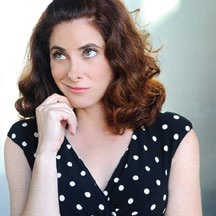
For show dates and venues go to winnipegfringe.com
By BERNIE BELLAN As has been our custom for many years now we try to find shows that have either Jewish performers or themes that would have particular appeal for Jewish audiences. Many of the Jewish performers at this year’s festival have been here before, but several are new. In no particular order here are blurbs about the shows we’ve found that fit the criteria I’ve just described. (By they way, if we’ve omitted a show that should be included in our list there’s plenty of time to get added to this post. Just drop me a line at jewishp@mymts.net.)

You’ve Been Served: A One-Woman Show About Divorce, Cults, and Coming of Age at Midlife
Noemi Zeigler
You are hereby summoned… to laugh, cry, and maybe belt out a Streisand number in solidarity. You’ve Been Served is a raw and riotous solo comedy by writer-performer Noemi Zeigler. It all begins when Noemi is served divorce papers on top of a garbage bin lid while taking out the trash—an undignified start to a full-blown midlife unraveling.
At 50, still clinging to her dream of becoming a singer, she falls under the spell of a music producer slash self-help guru, joins a spiritual cult, and, instead of landing a record deal, she lands in jail. Behind bars, with help from her long-buried inner child, she begins to reclaim her voice and her power. Turns out, dreams really do come true—just not the way she expected.
The show features vividly drawn characters—including a manipulative cult leader, a toxic ex-husband, and a jail guard named Roach who shares Noemi’s obsession with the fashion of Charlie’s Angels (the ‘70s TV version, of course.)
With salsa dancing, twerking, and a belting rendition of Don’t Rain on My Parade, Zeigler dives into abandonment, reinvention, and self-rescue. As she confronts perimenopause, she discovers it’s not the end—it’s the new puberty. The show touches on grief, sexuality, and spiritual confusion, but Noemi’s childlike optimism asks: What if your breakdown is actually your breakthrough?
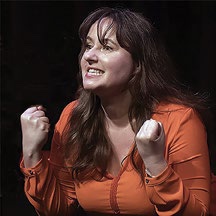
You’re good for nothing… I’ll milk the cow myself
Written & Performed by Natacha Ruck
France, 1981: The first socialist president is about to be elected and young Natacha is ready to implement her own political platform. But first, she has to take down the schoolyard bully,emasculate the rules of French grammar and make off with grandmother’s chocolate.
If you think you know the limits of Jewish mothers, evil grandmothers and transcontinental lovers, meet Natacha Ruck’s family. This true tale of three generations of women, facing three world wars, is equal parts hilarious, shocking and zany.

A One Human Being, Potentially Comedic Performance of Beauty and the Beast NEW WORK!
Written & Performed by Alli Perlov
Be our guest! Local high school drama teacher Alli Perlov is back for a tale as old as time. Can she sing? Not really. Can she act? That’s debatable. Will you laugh? Oh… probably.
Perlov plays dozens of characters, some human, some animal, and many objects, in a comedic exploration of Beauty and the Beast.
In an homage to this brilliant musical adventure, through witty commentary and unstoppable energy, Perlov aims to entertain an audience that isn’t forced to be there like her students.

Hockey Sticks and Beaver Pie
Written & Performed by Melanie Gall
Take a trip around Manitoba. From the 30,000 ft. St. Adolphe snow maze to the Narcisse snake dens! After all, where else holds both the title of Slurpee Capital of the World and the Guinness Record for the most people simultaneously howling like wolves?
Deanna Durbin, Terry Jacks and Burton Cummings are among the many homegrown stars, and Hockey Sticks features their music along with original songs and the stories that make this province unique.
Starring Melanie Gall from past shows Piaf & Brel, Ingenue and Toast to Prohibition
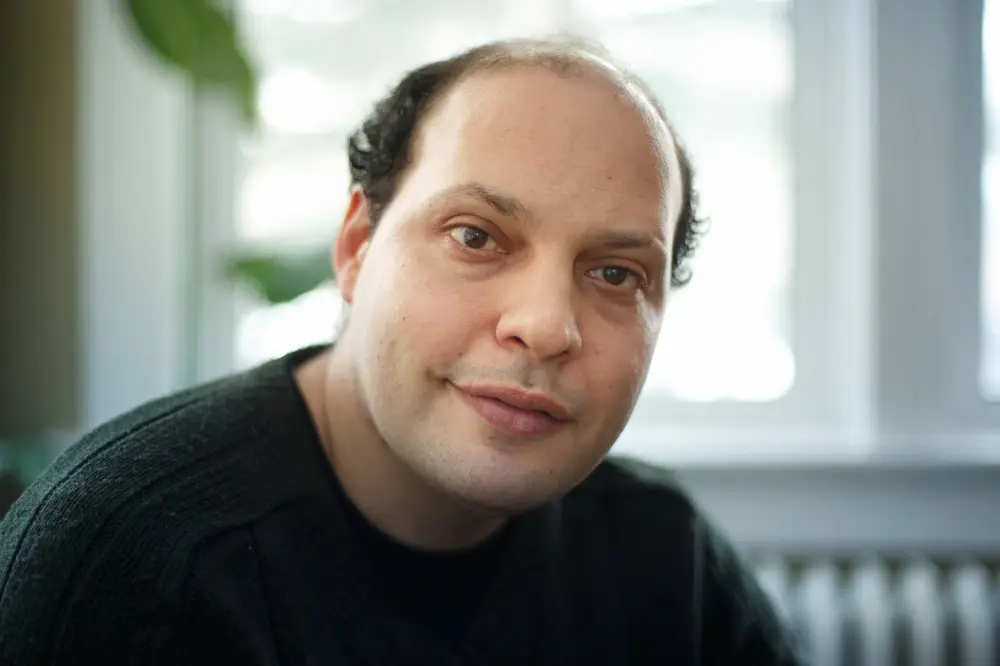
Nerohilarity Exposed
Produced by Adam Schwartz
We all sometimes feel exposed, whether that’s as a fraud or a pretender.
The performers of the award-winning Neurohilarity show, Danielle Kayahara (Laugh Out Loud CBC), Carole Cunningham (Yuk Yuks, The Debaters), Adam Schwartz (Winnipeg Fringe) and Rollin Penner (Yuk Yuks, CBC, Rumors, Winnipeg Comedy Festival), apply a comedic spin to the experiences that make us feel insecure, stripping away the emotional weight with nittygritty jokes and stories that will have you laughing uproariously.
Brilliantly awkward.

A Lesbian in the Kitchen
Willow Rosenberg
Professional lesbian Willow Rosenberg takes you on a journey through the centuries, superstitions and tablespoons of her lifelong passion for baking in this spiritual successor to 2024’s Jenny Award-nominated A Lesbian in a Bear Store.
Whether you have a favourite spatula, bake once or twice a year, or live in constant fear of being told to “just fold it in”, this one-woman show about family, joy, tradition (but make it gay),
Judaism, comfort, home (but make it gayer*), love, chemistry and magic is for you!
*Who’re we kidding, it’s all gay!

Eleanor’s Story: An American Girl in Hitler’s Germany
Written & Performed by Ingrid Garner
(Ed. note: Although Ingrid Garner isn’t Jewish, we thought the theme of this show might have a special appeal for Jewish readers.)
Based on Eleanor Ramrath Garner’s best-selling memoir, this 16x internationally award-winning adaptation – performed by her granddaughter, Ingrid Garner – details Eleanor’s youth as an American caught in Second World War Berlin.
Punctuated with humour and accompanied by cinematic sound and video, Garner embodies her ancestors in this coming-of-age odyssey, delivering an account of war that is more relevant than ever.

Reviewing The Free Press 2
Benji Rothman
The Winnipeg Free Press has run amok, reviewing each and every Fringe show over the past two decades without consequence or recourse. Now, it’s their turn… again.
In this refurbished work that debuted at last year’s Winnipeg Fringe, Benji Rothman once again takes the Winnipeg Free Press to task. In this (mostly) new, (hopefully) hilarious 45-minute show, Rothman dives deep into their past and exposes their faulty journalism, imbalanced reporting and, of course, embarrassing typos.
Local News
Jewish performers at this year’s Winnipeg Folk Festival July 10-13
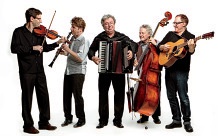
The Black Sea Station
Long ago, there were the klezmorim, itinerant musicians who roamed the back streets of Eastern Europe, playing at parties for meals and a few coins. The sound they honed then was a visceral exploration of life’s joy, and its loss; they could whip audiences into a frenzy of dancing, or bring them to tears with the mournful wail of a clarinet. Today, Winnipeg’s own The Black Sea Station is carrying on this tradition. Featuring Daniel Koulack (bass), Victor Schultz (violin) and Myron Schultz (clarinet) — cofounders of seminal local klezmer act Finjan — along with Moldovan accordion wizard Nikolai Prisacar and multi-instrumentalist Ben Mink, the quintet transports listeners to a time and place long past. Through a mix of original songs rooted in history, and traditional tunes spun up with modern zest, they whirl through the exuberant klezmer sounds of their Eastern European heritage, tending the old ways with deep love and respect.
The Black Sea Station will be performing Sunday, July 13, at 1:00 pm in Snowberry Field.
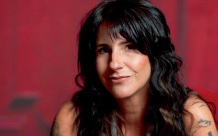
Romi Mayes
Romi Mayes has taken some hard knocks in her life, but she’s never faded away. For more than 25 years, Manitoba’s first lady of blues-rock has been a lynchpin of the Canadian roots scene. She earned that position the old-fashioned way, through her gritty, passionately emotive music. With her sizzling guitars and full-throated rasp, the Juno-nominated performer howls and purrs through razor-edged lyrics, rocking out wherever she can find a stage. She’s long been one of the hardest-working musicians on the circuit, keeping a busy slate of gigs and mentoring up-and-coming artists to get a foothold on the trails she blazed. Now, after a nine-year hiatus from the studio, Mayes has put her scintillating sound back on record with her long-awaited seventh album, Small Victories — a return that leaves no doubt, no matter the ups and downs, Mayes is here to stay.
Romi will be performing Friday, July 11, at 1:00 pm in Burr Oak.
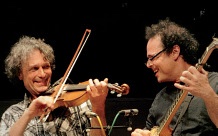
Leonard Podolak (with Matt Gordon)
Ireland’s Matt Gordon is a fiddler and singer, whose fleet-footed clogging and thigh-slapping hambone has taken stages by storm since the 1980s. Leonard Podolak is a virtuosic master of the clawhammer banjo, who for decades has whipped up some of Manitoba’s wildest roots parties with his band, The Duhks. Put those talents together, and they can promise you this much: we’re all gonna have a real good time. Longtime friends and musical collaborators, Gordon and Podolak deliver an exhilarating trip through old-time Appalachian music. Their performances seamlessly blend intricate instrumental lines with heartfelt singing and dazzling dance. They’ve teamed up on a few records over the years, including 2020’s bigband extravaganza Power Wagon: Live At Shanley’s. But the best way to experience this duo’s toe-tapping, hand-clapping chemistry is to see it live.
Podolak and Gordon will be performing A concert with a side of clogging Sunday, July 13, at 3:00 pm in Folk School.
